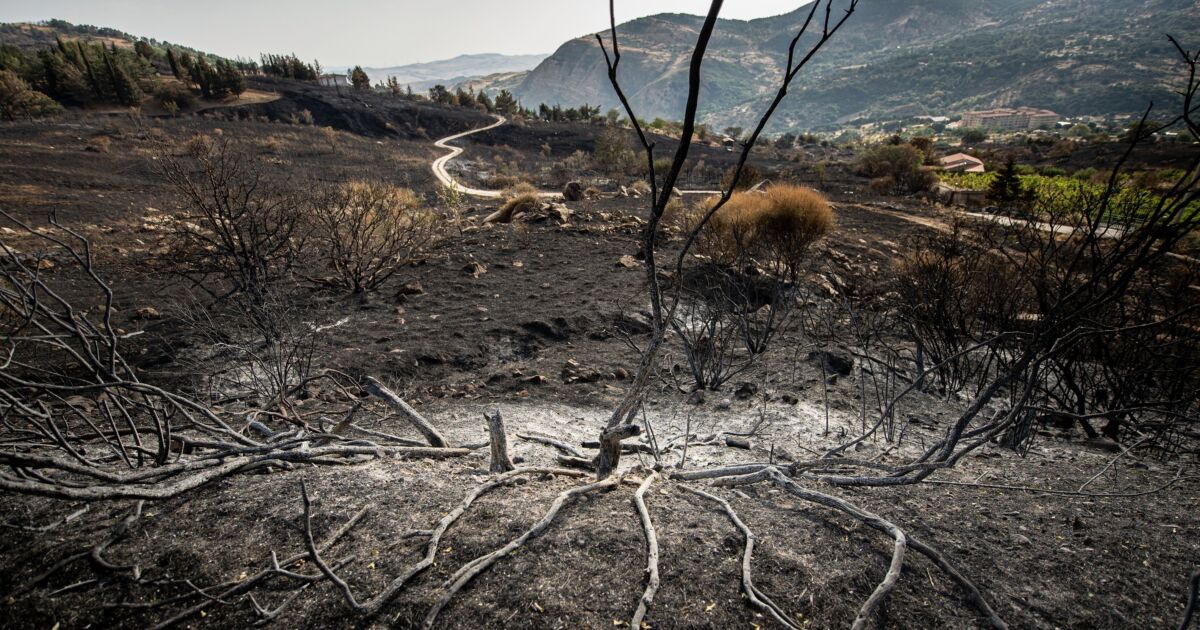Why insurers must address natural catastrophe protection gaps

With extreme weather and natural disaster events being recorded four times as often today as they were in 1970, the insurance and reinsurance industry has been steadily grappling with the related challenges and rising costs.
Global insured losses from natural catastrophe events in 2020 were $89 billion and 2021 losses are approximately double the long-term average on the back of ice storms in Texas, record-breaking heat in the western U.S., and widespread floods across Europe and China.
Secondary perils in particular are causing growing disruption. These are defined as natural catastrophes that generate small- to mid-sized losses such as floods, storm surges, wildfires and hail. In recent years, they have driven the majority of insured losses from natural catastrophes as extreme weather has collided with demographic factors such as urbanization. Eight of the last ten years have seen higher economic losses from secondary perils than primary perils.
The relationship between climate change – and rising insured losses for natural catastrophes is complex but there is growing consensus that there is a causal link. Research from the emerging field of climate attribution science – which seeks to understand the extent that changing weather patterns are caused by anthropogenic climate change – suggests that 70% of extreme weather events over the past 20 years have been made more likely or more severe by climate change.
The trends we see today are only the thin end of the wedge: climate scientists agree that, regardless of global action to decarbonize, extreme weather will intensify for at least the next ten years. This will have a profound impact on the insurance industry, especially on pricing, capital allocation, and demand for product innovation.
Insurers and reinsurers are reacting to the more challenging natural catastrophe environment through higher premiums, exclusions and deductibles. Non-renewal is a growing trend for perils such as California wildfires, and Swiss Re said last year that it is reducing its exposure to secondary perils as well as raising its modeled risks associated with weather events in Australia, typhoons in Japan, and wildfires in California.
The natural catastrophe protection gap was already large and now with some signs the market is pulling back even more, the gap between economic and insured losses is only likely to widen.
Insurance demand to rise: How will insurers respond?
The market’s retreat may be an understandable short-term reaction in the face of rising losses, but – with the impact of climate change only in its infancy – now is a good time for the industry to question if this is a sustainable response in the medium and long-term. As climate-related risks grow, this economic and societal function will become even more important as individuals and businesses seek financial protection against heightened uncertainty.
Global insurance demand is therefore only likely to grow in the face of climate change. Individuals and businesses will need more protection from extreme weather and new risks will require new types of insurance products.
This means the industry has both a commercial opportunity and a responsibility to its stakeholders to find risk transfer solutions that are fit for the world of rising weather extremes.
The climate data gap
There are two immediate obstacles to improving natural catastrophe risk coverage.
First, the industry’s reliance on historical loss data and traditional catastrophe models is limiting its understanding of future climate risks. Given the increasingly dynamic and nonlinear weather patterns, backward-looking data is becoming a less reliable indicator of present or future conditions. It also struggles to account for socio-economic changes such as demographic shifts, or changes in building codes and construction practices. These factors are of growing importance for assessing property risk as extreme weather becomes more common.
As a result, it has become much harder to assess the risk inherent in a property portfolio, accurately price individual risks or gauge appropriate capital allocation by relying on traditional methods alone. Indeed, S&P analysis of the sector’s preparedness for climate change losses concludes that reinsurers’ estimates of their exposure to natural catastrophe risk, and therefore physical climate risk, “could be underestimated by 33%-50%.”
The second challenge is a lack of granular data needed to better understand secondary perils that lack established models. For these perils, access to detailed information matters enormously. Whereas a hurricane may have a fairly uniform impact across several postcodes, a flood or wildfire can destroy one property and leave the neighboring one intact.
The elevation of the front door; density of surrounding vegetation; proximity of fire services; quality of construction materials; and condition of property are just a few examples of key indicators that can be highly predictive of loss that, at present, most insurers do not have access to.
Building the capability to respond
The data gap is creating a headwind for the capacity and innovation required from the insurance industry to tackle climate-related risk transfer head-on. The industry must innovate its risk assessment capabilities for secondary perils if it is to ensure financial resilience.
This will require the adoption of new modeling techniques to monitor the impact of changing weather patterns on property and infrastructure and to drive a better understanding of risk selection in the context of secondary perils.
The industry must be more intentional in addressing the growing protection gap and ensure our data capability is fit for this modern challenge.



